Question: Lately, I’ve been struggling to create content for all the platforms that I’m on and I found out about AI tools that help with writing. It seems like this would help me a lot with my marketing efforts, but I’m worried that it’ll come off as robotic and inauthentic. Should I consider using AI tools to create content?
GPT-3 is one of the hottest buzzwords in machine learning and artificial intelligence (see: this WIRED article and the handy graph below).
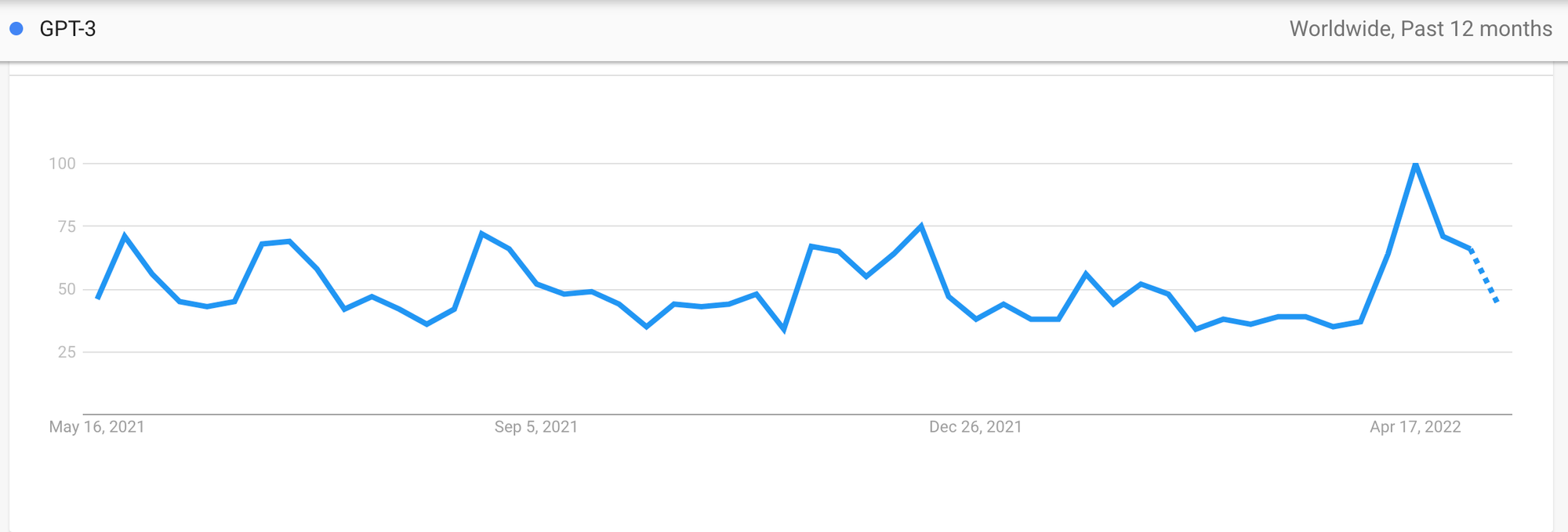
Picture this: what if you didn’t have to come up with copy for every single marketing asset you created? That’s one of the problems GPT-3 tries to solve. After all, as Olabinjo Adeniran, a digital and growth marketing manager, put it, “Computers have always assisted us in our jobs. It's only reasonable that they continue to help us achieve business goals.”
It is especially gaining popularity with the advent of tools that will provide you with an article, email, or social media caption after you answer a few questions.
Despite the excitement around these tools in the tech industry, most people, especially marketers, tend to lean towards skepticism when it comes to adopting AI in creating copy.
When I read AI generated copy…
— Katelyn Bourgoin ⚡️ (@KateBour) May 10, 2022
I remember why creativity will be one of the last human skills to be successfully automated
It’s also super controversial, with people divided on what circumstances warrant the use of GPT-3, which is essentially artificial intelligence, or whether it should be used at all.
i would argue the opposite!
— Ryan Law (@thinking_slow) May 11, 2022
AI models like GPT-3 are *phenomenally* creative - it's their ability to conform to expected norms (format, structure, sequence) that struggles right now https://t.co/hW8UBk4lIz
In this piece, we’ll be diving into the different opinions on the use of AI in marketing, its various applications, and whether you should be using it to create content for your business.
What does “AI in Marketing” mean?
Using GPT-3 tools like CopyAI to create content for your marketing assets. GPT-3 stands for “generative pre-trained transformer 3.” It is the 3rd iteration of the project, released by OpenAI in June 2020.
The writer of this WIRED article pointed out that “GPT-3 can generate impressively fluid text, but it is often unmoored from reality.” However, ideas with a foundation in reality are essential for content development in marketing.
In addition to philosophical concerns about how GPT-3 develops ideas, there are also practical dilemmas. Marketers tend to worry about the potential for GPT-3 to only ever be able to create black hat SEO content – low-quality content created purely for a search engine’s algorithm.
Does AI writing actually work?
I asked around with polls on Twitter and LinkedIn, and the consensus seemed to land on — it depends. A small caveat here is that these polls aren’t a definitive data source, but are important for adding context.
Should AI (a la @copy_ai) and GPT-3 tools be used for marketing/content creation? Elaborate in the replies please🙂
— tamilore (@tamioladipo) May 9, 2022
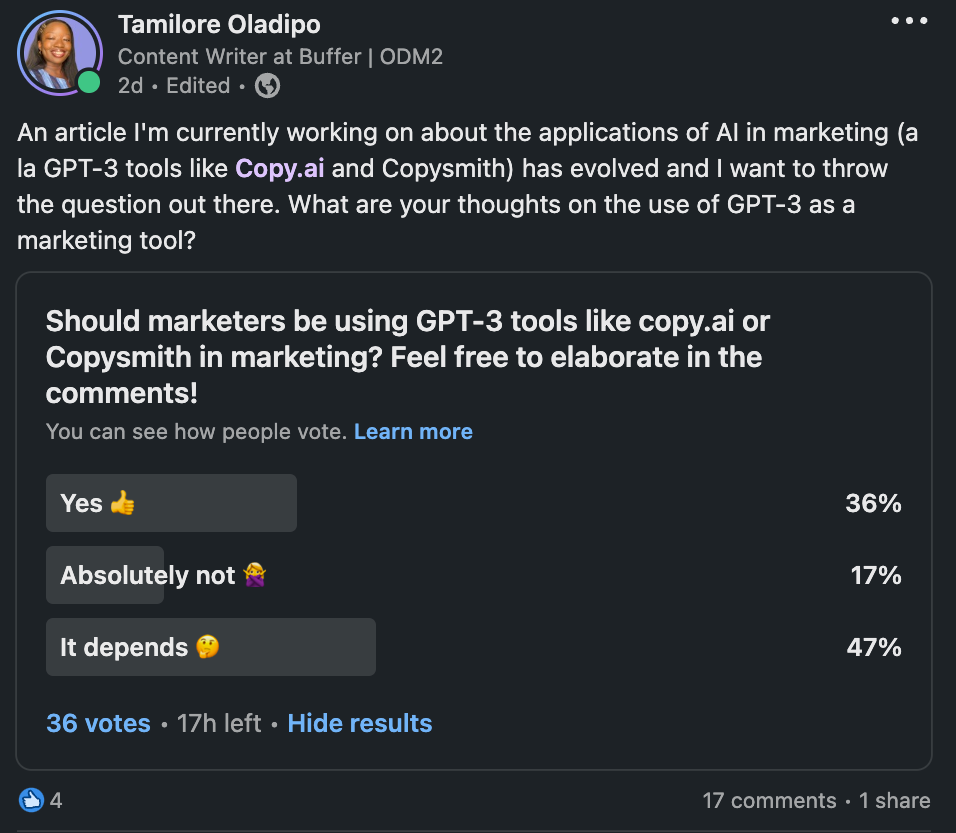
Many factors go into creating content, and GPT-3 could become one of those factors. While it’s not a perfect system and cannot yet create long-form content indistinguishable from humans, there are situations where it may be helpful.
One of the responses to the LinkedIn post was from Abdultawwab, a content marketer who said, “It depends. I’ve seen these tools as a way to escape writer's block. You know those minutes you spend staring at a blinking cursor without knowing where to start? GPT-3 will give you the juice you need to get started. But when using it to develop a full-length article, the content will just not sound right nor will it flow well. But that’s just for writing. For other marketing use cases, they’ll be almost perfect as chatbot agents.”
Even though AI can create content based on the facts and stats that it collects from the web, it can't develop empathy, creativity, and emotions. It doesn’t have the capacity for storytelling that humans have. Rejoice Obike, a content marketing strategist, shares this sentiment. In her reply, she shared, “It depends. AI tools can’t understand your business the way you do. People are your target audience. So copy should be as human as possible. AI can’t reach that emotive you want to achieve with your niche market.”
Essentially, whoever can figure out how to code that natural human creativity into AI might just take over the world – or at least the marketing industry.
Should you be using AI tools for content creation?
My gut instinct as a writer is to say no. However, part of my job is considering multiple perspectives when writing a piece — which changes my answer to “it depends.”
Adopting GPT-3 in your writing could definitely yield some benefits, some of which we’ve touched on in this article, from helping you escape writer’s block to generating content ideas.
Another scenario where it makes sense to adopt an AI tool in your marketing is if you’re a small business with a limited budget and team. If this is you, using GPT-3 for tasks like generating Instagram captions can allow you to focus your creative energy on other parts of your business.
Also, if you’re a regular person trying to build a personal brand and publish consistently, a GPT-3 tool might be a good companion on your journey. However, it shouldn’t become the replacement for your own voice by any means, merely an assistant.
On the flip side, if you’re working as an experienced marketer, AI tools should be left alone or used only for low-effort tasks. There’s no replacement for your innate creativity. As Tosin Onikosi, a content marketing specialist, aptly put it, “I personally think that great copy should be human in order for it to connect to the reader. If copy ideation/creation becomes fully automated, I would imagine that it takes the originality and creativity out of it. I just don’t believe that creativity is something that can ever be achieved by machine learning.”
Examples of a GPT-3 tool in action
To provide a relatively unbiased perspective, I used CopyAI to create content related to this article. The tool gives you several options to choose from, so I picked something that seemed relevant: a blog post intro.
I started by entering the information I had on hand as I was outlining and drafting this piece to see what would be different from my intro to the AI’s. I was also given the option to choose what tone I wanted the introduction to be written in and ‘Witty’ won over options like ‘Professional’ or ‘Empathetic.’
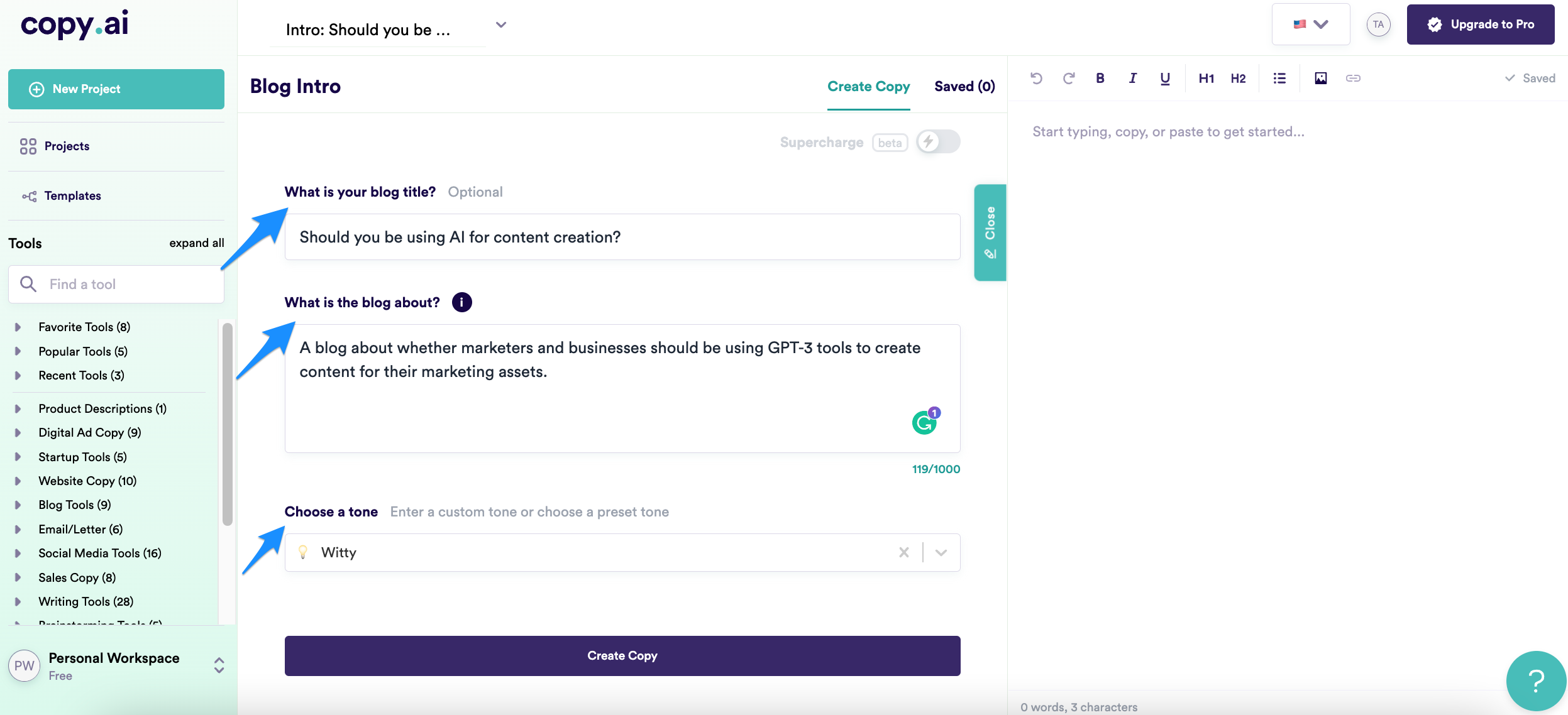
A few seconds after clicking ‘Create Copy,’ I was presented with several options for my new intro. Here are some of them in order from my favorite to least favorite.
Intro #1

Thoughts: I actually like this introduction – it’s pretty straightforward and sounds like what a human would write for a post like this. My article is opinionated, so I’m not using a Pros → Cons → Effectiveness structure.
Intro #2
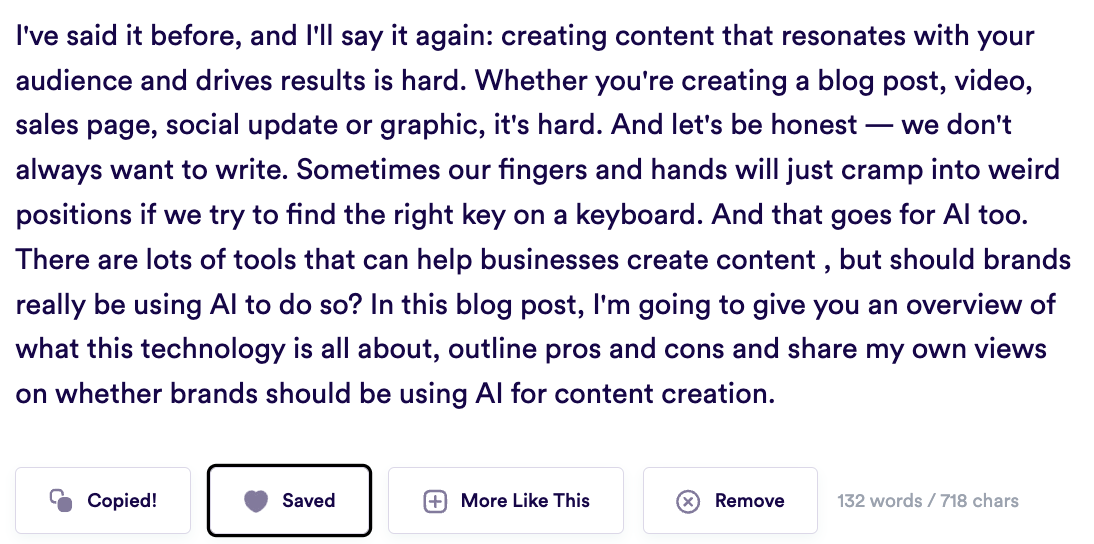
Thoughts: This one started off pretty well – empathizing with the reader and mentioning things that the tool might be able to help with. However, it fails to connect the dots, and it feels like something is missing between the first bit and the thesis statement.
Intro #3
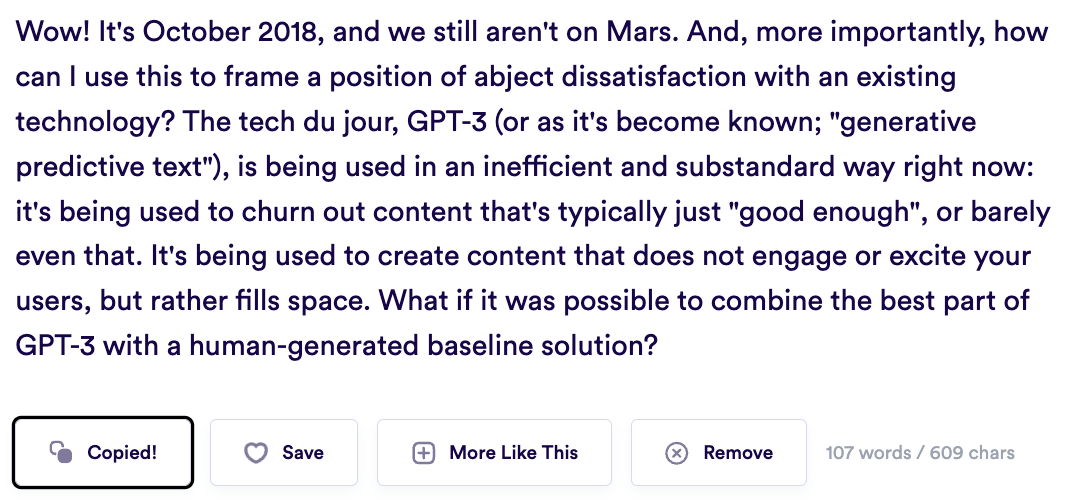
Thoughts: No, it’s not October 2018 – this intro gets a deduction for misinformation. Some good points are made, but the AI also fails to connect the dots that let the reader know the point of the article. It also comes off more as LinkedIn influencer-speak than a helpful blog post intro.
Overall, I think this tool is a good jumping-off point for writing an article and can help spark some ideas if you’re stuck. Kenza Moller, a content marketer, pointed this out as well, saying, “They can be a great way to generate content ideas & speed up SEO content creation — but at their current stage, I think they're just an early starting point.”
Another snag with this tool is that it isn’t foolproof. The AI won’t have the full context that you do. You will also need to do a lot of editing to get it up to par with your other human-made work. So keep that in mind as you use these tools.
Want to give AI a go? Use it at the preliminary stage of your marketing efforts
It’s natural to be curious — which is probably why you’re reading this article in the first place. If you’re interested in giving AI a go or adding a GPT-3 stage to your marketing process, then go for it — with a caveat. Keep it strictly as a tool for getting ideas or handling the small stuff, and let your team’s creativity turn the initial loose threads into a well-made content garment.
If you’re curious about what AI can contribute to your marketing, consider CopyAI’s extensive options or Copysmith (the only tool to get a 4/5 star rating in this Writer article). The tool focuses on marketing for e-commerce teams and agencies but has several interesting use cases, including product descriptions, blog templates (not the whole thing), and ad copy.
And when you have your copy ready, at least for social media, you can publish it through Buffer 😉.
Try Buffer for free
190,000+ creators, small businesses, and marketers use Buffer to grow their audiences every month.




